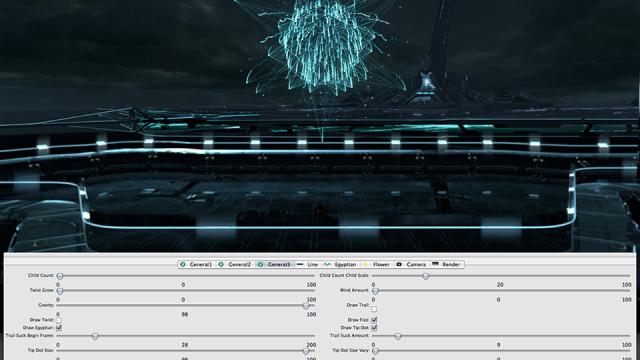Have you ever wondered about the creative process behind all that software art you see in movies such as Minority Report? You’ve probably wished your operating system’s interface was blue-on-black, at any rate. Josh Nimoy, the man behind the special effects for Tron Legacy, has described how the movie’s software art came about – and provided a unique glimpse at some stills from the creative journey.
But first, Nimoy’s incredible geeky look at other movies’ software art:
“I take representing digital culture in film very seriously in lieu of having grown up in a world of very badly researched user interface greeble. I cringed during the part in Hackers (1995) when a screen saver with extruded “equations” is used to signify that the hacker has reached some sort of neural flow or ambiguous destination. I cringed for Swordfish and Jurassic Park as well. I cheered when Trinity in The Matrix used nmap and ssh (and so did you). Then I cringed again when I saw that inevitably, Hollywood had decided that nmap was the thing to use for all its hacker scenes (see Bourne Ultimatum, Die Hard 4, Girl with Dragon Tattoo, The Listening, 13: Game of Death, Battle Royale, Broken Saints, and on and on).
In Tron, the hacker was not supposed to be snooping around on a network; he was supposed to kill a process. So we went with posix kill and also had him pipe ps into grep. I also ended up using emacs eshell to make the terminal more l33t. The team was delighted to see my emacs performance — splitting the editor into nested panes and running different modes. I was tickled that I got emacs into a block buster movie. I actually do use emacs irl, and although I do not subscribe to alt.religion.emacs, I think that’s all incredibly relevant to the world of Tron.
Nimoy lists Adobe software; Cinema 4D and C++ along with OpenFrameworks and wxWidgets as being key ingredients in his six month-long journey writing the software used for Tron Legacy.
Whether you’re an FX nerd or just like looking at pretty photos, do check out Nimoy’s blog for more. [Josh Nimoy via Core77]
